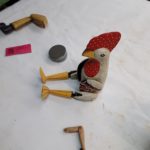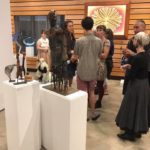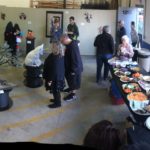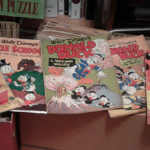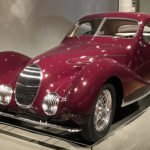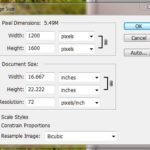I’ve wanted to do this since Carole first asked me to announce it. I finally made the third iteration and was not disappointed. What a hoot. Here’s the idea. On certain Wednesdays, (to be announced to members) Carole Murphy opens her sculpture studio and her immense collection of oddities for members to use as they […]
George Heath
Sculpture Show Opens at Portland’s Multnomah Art Center
Nearly a year ago, at a member meeting in SE Portland, board president Chas Martin suggested we do a sculpture show based on collaborations between member pairs. Needless to say, the concept was met with much enthusiasm. First, each member could choose their own collaborator, or one would be chosen for them. Each participant would […]
Sculptors Share Secrets At International Sculpture Day 2019
We’ve yet to have an International Sculpture Day celebration that was not a great success. This one was slimmed down from previous years in that it was to be merely a juried exhibition with a few artists demonstrating techniques. A budget was set for food and the demonstrators paid a small fee to participate. Sculptors […]
Descartes’s Ipad – When 3D Technology and Sculpture Combine
Some years ago, I read a short blurb about a new 3D technology that could paint an image directly onto the retina. The resolution was poor but there were high hopes that would be improved. I never heard another thing about it, but it got me thinking. Would there come a day when you wouldn’t […]
Elements of art: Thoughts about Lines
Just there on the office floor are 3 good sized boxes of comics. They are there because a friend of my nephew’s passed away and willed him his collection. They are Golden Age comics. That is from the 40’s, 50’s and early 60’s. There are several holy grails of comic art in there. In particular, […]
The Shapes of Cars at the Portland Art Museum
A review of the 2018 classic car exhibit “The Shape of Speed” through the lens of a sculptor, by Pacific Northwest Sculptors member George Heath.
How to photograph sculpture for the web
An article by Pacific Northwest Sculptors member George Heath on how to photograph sculpture for the web and edit the images.
Portland Winter Light Festival promotes art in public spaces
George Heath The Portland Winter Light Festival is going as I write this. Last year we chickened out due to rain. This year we did not. The Max line is not far from here and there is a stop right in the center of the activity. The Portland Opera was singing on the Portland Spirit […]
